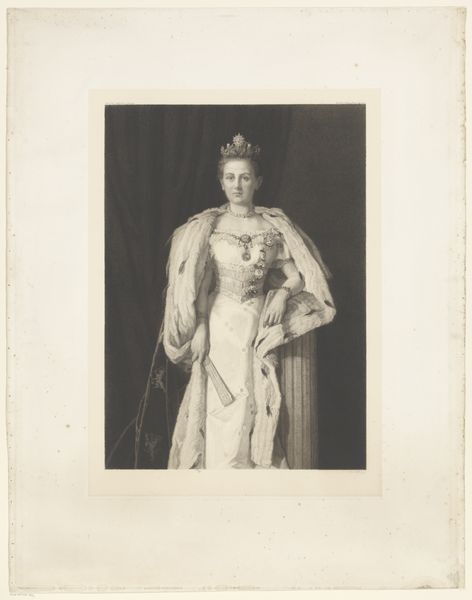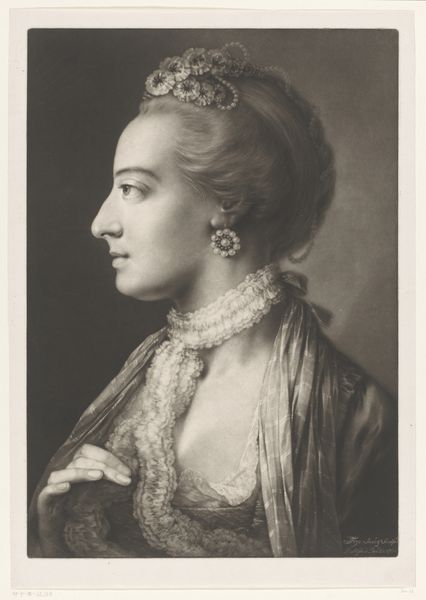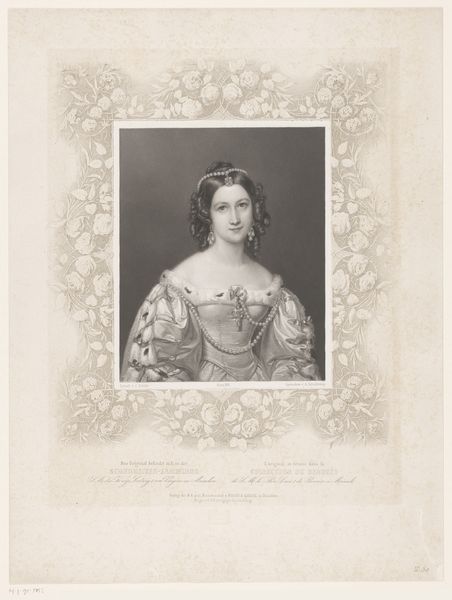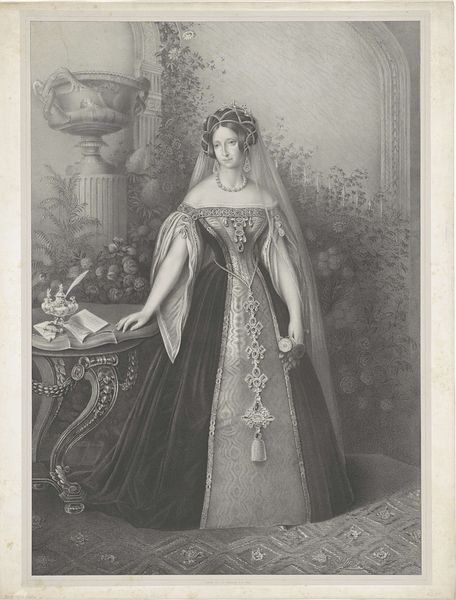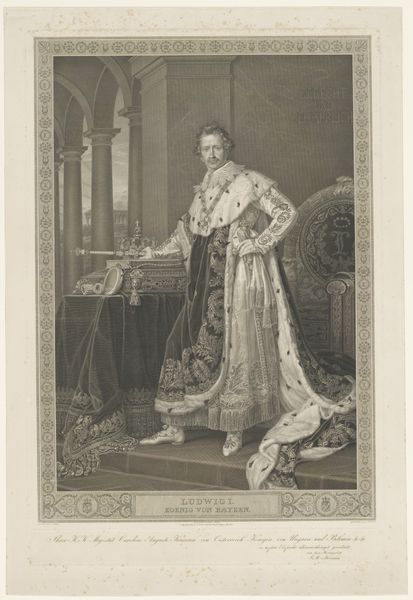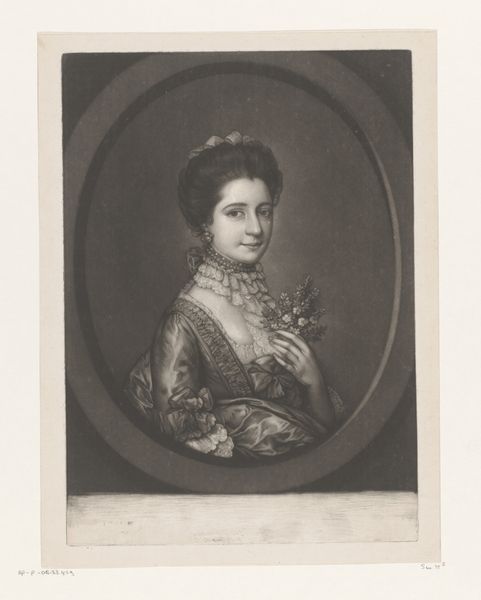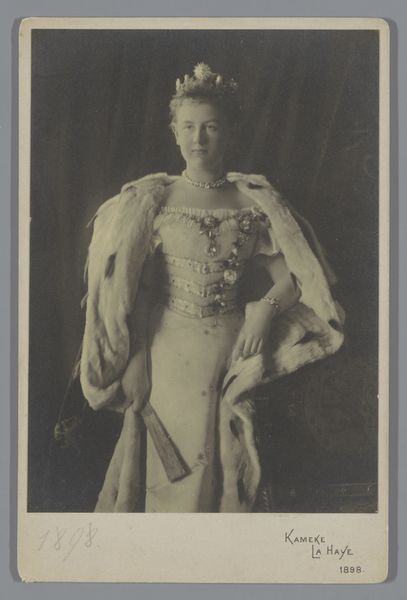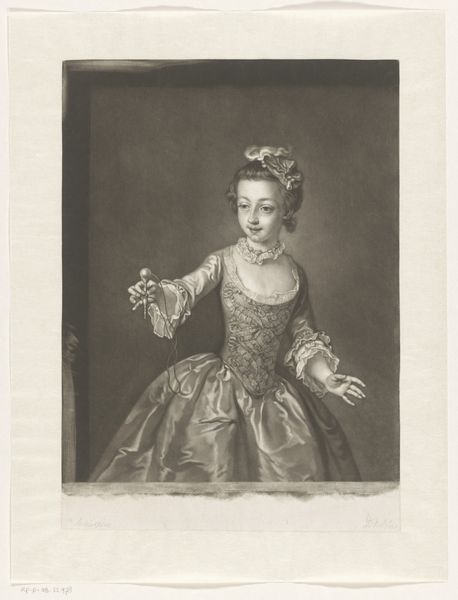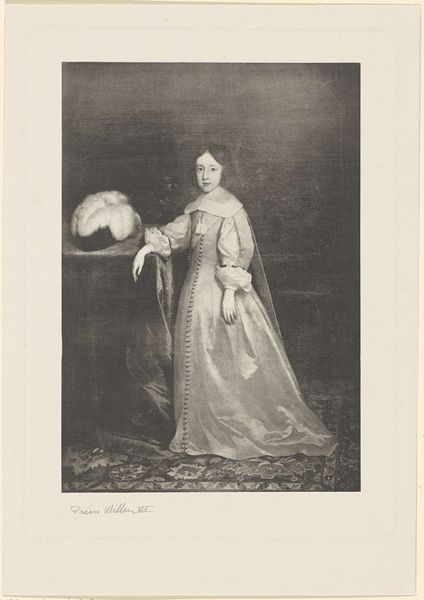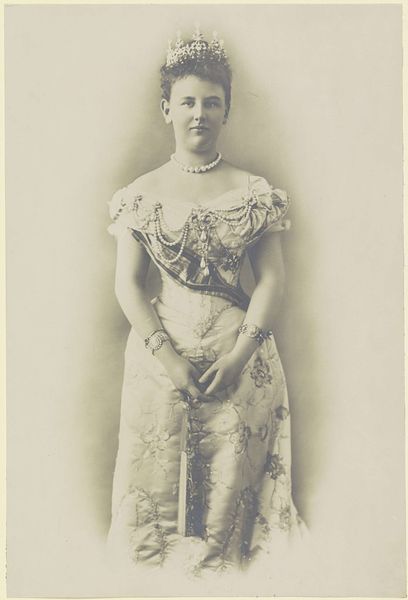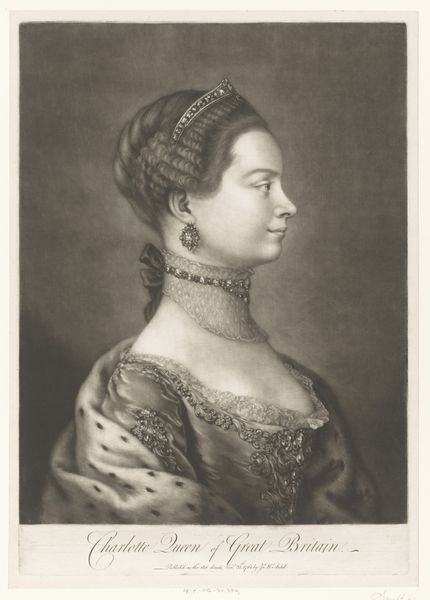
drawing, graphite
#
portrait
#
drawing
#
neoclacissism
#
historical photography
#
graphite
#
history-painting
#
academic-art
Dimensions: height 391 mm, width 283 mm
Copyright: Rijks Museum: Open Domain
Editor: This is "Portret van Janet Erskine," a drawing by James Watson, sometime between 1761 and 1790. It looks like graphite on paper, and it's currently housed at the Rijksmuseum. The level of detail in her lace shawl is amazing! How would you approach this piece? Curator: Looking at it materially, consider the labor involved in both the creation of the drawing itself and the depicted textile. Think about the social status associated with the ownership and display of such intricate lace versus the people who made it. It reflects a highly stratified society and the relationship between artistic production and wider economic forces. Editor: So, the emphasis shifts from Watson’s skill to the social realities of his time? Curator: Precisely. Watson chose graphite—a relatively accessible material—to depict a world of luxury and exclusivity. The drawing, while itself an object of value, becomes a document of consumption, displaying not just wealth, but also the very means of its creation and distribution, and the people whose hands and bodies brought wealth to a select few. Consider too who owned the drawing, who it was intended to impress, and to what purpose it may have served beyond its initial sitting. Editor: That’s a really interesting perspective! I hadn't thought about the connection between the artist’s medium and the broader socio-economic picture. Curator: By interrogating those connections, we can push against the boundaries that might conventionally separate 'high art' from more traditionally regarded craft activities and labor. And in so doing it offers a much wider cultural understanding of this era and art object. Editor: I guess it’s easy to get lost in the aesthetics and miss the deeper material implications. I'll definitely look at art differently now! Curator: Exactly. Hopefully this contributes to a more grounded interpretation.
Comments
No comments
Be the first to comment and join the conversation on the ultimate creative platform.
